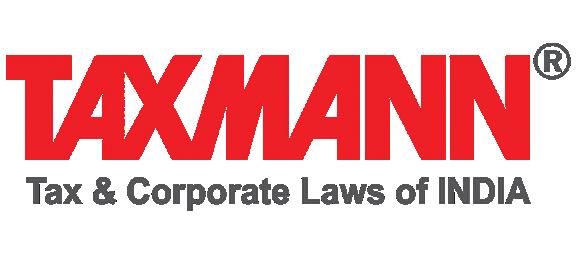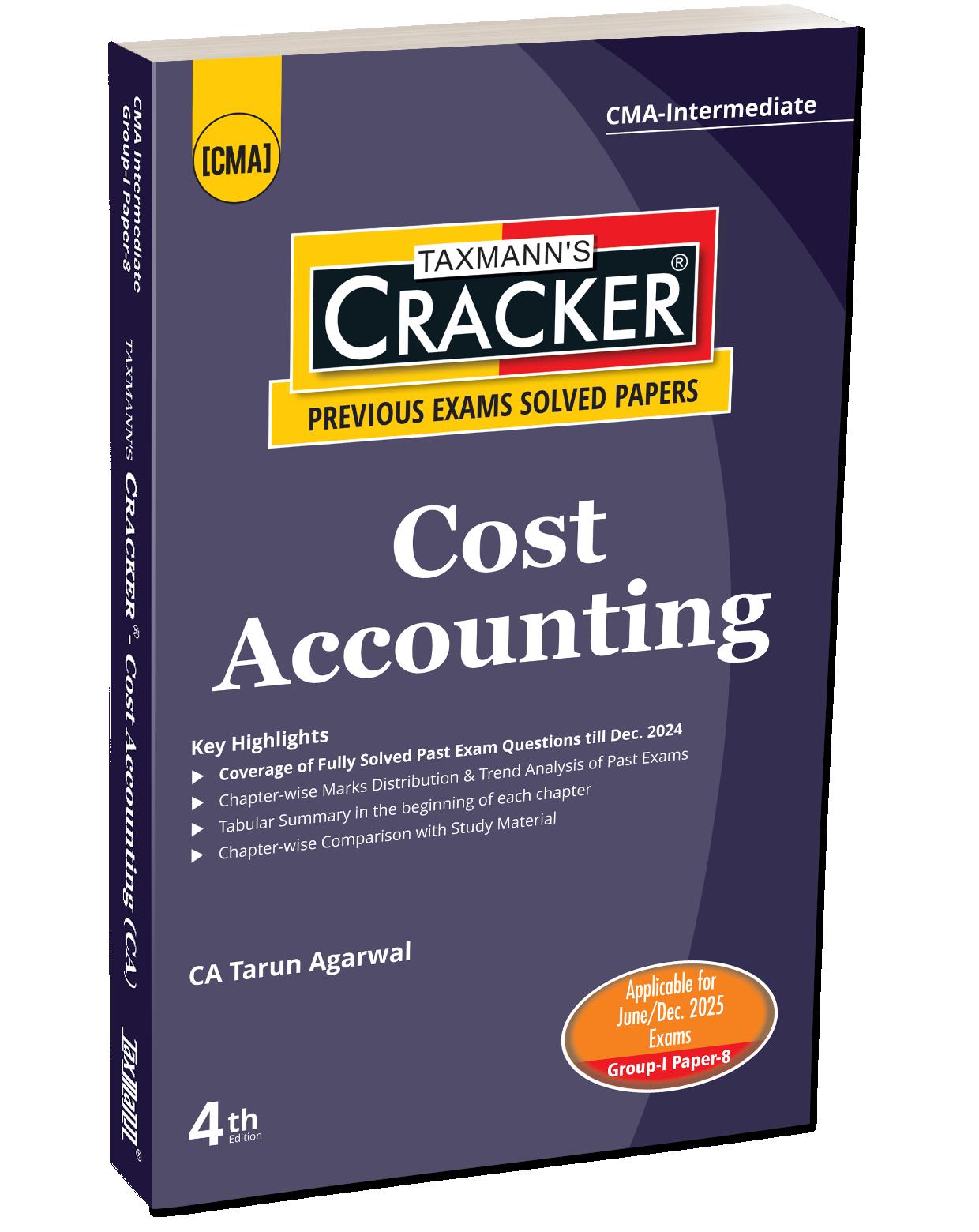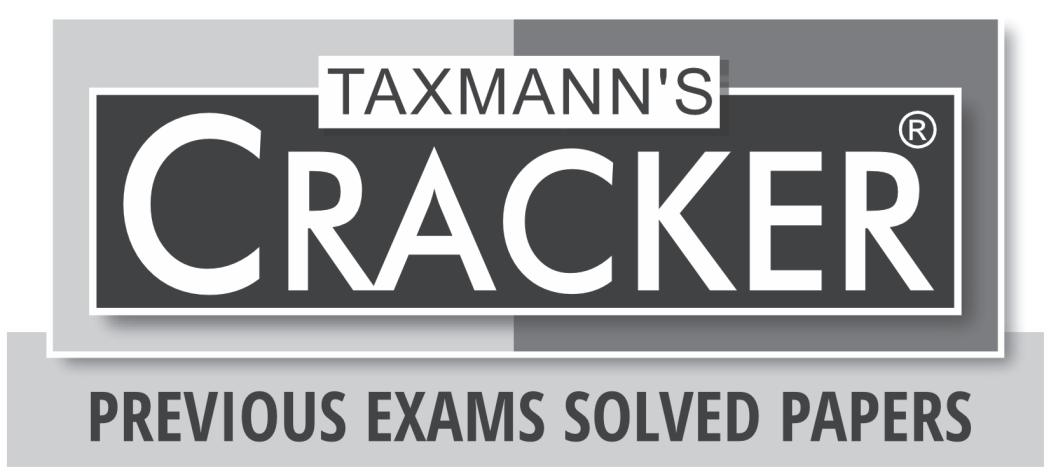CHAPTER
A Quick Review
Contract Costing is a form of specific order costing where costs are attributed to contracts.
Essential features of contract costing:
(a)A formal contract is made between customer and supplier.
(b)Work is undertaken to customers’ special requirements.
(c)The work is for a relatively long duration.
(d)The work is frequently constructional in nature.
(e)The method of costing is similar to job costing.
(f)The work is frequently based on site.
(g)It is not unusual for a site to have its own cashier and time-keeper.
Types of Contracts:
(1)Cost-Plus Contracts: Cost-plus contract is a contract where the value of the contract is determined by adding an agreed percentage of profit to the total cost. These types of contracts are entered into when it is not possible to estimate the contract cost with reasonable accuracy due to unstable condition of factors that affect the cost of material, employees, etc.
(2)Target-price contracts: In such cases, the contractor receives an agreed sum of profit over his pre-determined costs. In addition, a figure is agreed as the target figure and if actual costs are below this target, the contractor is eligible for bonus for the savings.
IMPORTANT DEFINITIONS
Cost of Work Certified or Value of Work Certified: A contract is a continuous process and to know the cost or value of the work completed as on a particular date; assessment of the completion of work is carried out by an expert (it may be any professional like surveyor, architect, engineer etc.). The expert, based on his assessment, certifies the work completion in terms of percentage of total work. The cost or value of certified portion is calculated and is known as Cost of work certified or Value of work certified respectively. Payment is made on the basis of work certified.
Cost of Work Uncertified: It represents the cost of the work which has been carried out by the contractor but has not been certified by the expert. It is always shown at cost price. There is no role of work uncertified in payment.
Work-in-Progress: It costing refers to the work which is not complete on the reporting date.
Value of the work-in-progress = the cost of work completed, both certified and uncertified + the cost of work not yet completed + amount of estimated/notional profit (reserve for contingencies). [amount received from the contractee is subtracted from the WIP in the Balance Sheet]
Retention Money: In a contract, a contractee generally keeps some amount payable to contractor with himself as security deposit. To ensure that the work carried out by the contractor is as per the plan and specifications, it is monitored periodically by the contractee. This security money upheld by the contractee is known as retention money.
Retention money = Value of work certified- Payment made to contractor.
Notional Profit: It represents the difference between the value of work certified and cost of work certified.
Estimated Profit: It is the excess of the contract price over the estimated total cost of the contract. [can be calculated and feasible to calculate only in case of contracts whose end is near].
Escalation Clause: In order to protect the contractor from the rise in the price, an escalation clause may be inserted in the contract. Escalation clause in a contract empowers a contractor to revise the price of the contract in case of increase in the prices of inputs due to some macro-economic or other agreed reasons. As per this clause, the contract price is increased proportionately if there is a rise in input costs like material, labour or overheads.
IMPORTANT FORMULAS
Degree of completion of the contract (%) = Work Certified × 100/Contract Price
Formulas for transfer of Profit/Loss to Profit and Loss Account
If the contract is in its early stages:
No profit should be credited to Profit and Loss Account.
As a general rule, no profit should be recognised unless a contract is at least 25% complete.
If the contract is reasonably advanced:
In this case the portion of notional profit to be transferred to Profit & Loss Account is based on the degree of completion of the contract.
1. If the degree of completion of work is above 25% but less than 50% of total work
1/3 × Notional Profit × Cash Received/Work Certified
2. If the degree of completion of work is more than or equal to 50% of the total work but less than 90%,
2/3 × Notional Profit × Cash Received/Work Certified
If the contract is almost complete (Degree of composition is 90% or more):
1. Estimated Profit × Work Certified/Contract Price
2. Estimated Profit × Work Certified/Contract Price × Cash Received/Work Certified
3. Estimated Profit × Total Cost to date/Estimated Total Cost
4. Estimated Profit × Total Cost to date/Estimated Total Cost × Cash Received/ Work Certified
When an incomplete contract reveals a loss:
The whole amount of the loss must be charged to the profit and loss account of the accounting year.
PAST EXAMINATION QUESTIONS
Q.1. Fill in the blanks:
OBJECTIVE QUESTIONS
WIP appears on the credit side of the contract account when the contract is ……………… at end of the accounting period. [Dec. 2013, 1 Mark]
Ans. Incomplete
Q.2. A JBC machine was used on a contract site for the period of 7 months and depreciation on it was charged to the contract ` 78,750. If the working life of the machine is 5 (five) years and salvage value is ` 25,000, then the cost of JBC machine will be: (A) ` 7,00,000 (B) ` 4,18,750 (C) ` 6,75,000 (D) ` 3,93,750 [Dec. 2014, June 2015, 1 Mark]
Ans. (A) ` 7,00,000
Working Note:
Depreciation for one year 78,750 × 12/7 = ` 1,35,000
Depreciation for 5 years 1,35,000 × 5 = ` 6,75,000
Cost of Machine = Total Depreciation plus salvage value ` 6,75,000 + 25,000 = ` 7,00,000
Q.3. Match the items in Column I with the most appropriate items in Column II. State the item No. only:
IItemColumn II
(i)Escalation Clause(A)Operating Costing (B)Contract Costing [June 2015, Dec. 2018, Dec. 2019, Dec. 2021, 1 Mark]
Ans. (B) Contract Costing
Q.4. A contract is expected to be 80% complete in its first year of construction, as certified. The Contractee pays 75% of the work certified as and when certified and makes final payment on the completion of the Contract. The following information is available for the first year:
Cost of Work uncertified 80,000 Profit transferred to Profit and Loss Account at the end of year 1 on incomplete contract 60,000 Cost of Work to date 8,80,000 Compute the Notional Profit. [Dec. 2015, 2 Marks]
Ans.
As the Contract is 80% complete, 2/3rd of Notional Profit on Cash basis has been transferred to P/L A/C in the 1st year of the contract. Thus, amount transferred to P/L A/C = 2/3 × Notional Profit × % of cash received
Or, ` 60,000 = 2/3 × Notional Profit × 75% Or, Notional Profit = 60,000 × (3/2) × (100/75) = ` 1,20,000
Q.5. Match the items in Column I with the most appropriate items in Column II. State the item no. only
(i)Profit earned on a contract Account (A)Actual profit (B)Notional Profit [June 2017, 1 Mark]
Ans. (B) Notional Profit
Q.6. In the context of Contract a/c, work completed and not yet certified will be shown
(A) at cost plus + 2/3rd of the notional profit under ‘Completed Work’. (B) at cost plus notional profit less retention money under ‘Completed Work’.
(C) at cost under ‘Completed Work’.
(D) at cost under WIP a/c. [June 2017, Dec. 2021, 1 Mark]
Ans. (D) at cost under WIP a/c
Q.7. _______ is to provide for any future decrease in price etc., so that the benefit may be passed on to the contractee.
(A) Reserve Clause
(B) Escalation Clause
(C) Contract clause
(D) Retrospective Clause [Dec. 2017, 1 Mark]
Ans. (B) Escalation Clause
Q.8. In contract costing, the cost unit is ________________.
[June 2019, 1 Mark]
Ans. Per Contract
Q.9. Cost plus contract is usually entered into those cases where:
(A) Cost of certified and uncertified work
(B) Cost can be easily estimated
(C) Cost of certified work
(D) None of the above [Dec. 2022, 1 Mark]
Ans. (D) None of the above
Q.10. State which of the following is/are characteristics of the contract costing.
(1) Homogeneous products
(2) Customer-driven production
(3) Short timescale from commencement to completion of the cost unit.
(A) (1) and (2) only
(B) (1) and (3) only
(C) (2) only
(D) (3) only
Ans. (C) (2) only
[Dec. 2023, 1 Mark]
THEORY QUESTIONS
Q.1. Explain the treatment of profits on incomplete work in contract accounts. [June 2013, 5 Marks]
Ans.
Treatment of profits on incomplete work in contract accounts:
(i) In case of contracts which are less than 25% complete, on profits should be taken into consideration and consequently no credit should be taken to Profit and Loss Account.
(ii) In case of contracts which are more than 25% complete, but less than 50% complete, the following method should be used for computing the profit to be credited to the Profit and Loss Account:-1/3 x Notional Profit x Cash Received/ Work Certified.
Notional Profit is the difference between the value of work certified and cost of work certified. It is computed in the following manner. Notional Profit = Value of work certified – [cost of work to date – cost of work completed but not certified].
(iii) In case of contracts complete between 50% and 90% [more than 50% but less than 90%] the following method is used for computing the profit to be credited to the Profit and Loss Account:- 2/3 × Notional Profit × Cash Received/Work Certified.
(iv) In case of contracts completed 90% or more than that, it is considered to be almost complete. In such cases, the estimated total profit is first determined by deducting the total costs to date and additional expenditure necessary to complete the contract from the contract price.
The portion of profit so arrived is credited to the Profit and Loss Account by suing any of the following formula:—
Method I – Estimated Profit × Work Certified/Contract Price
Method II – Estimated Profit × Work Certified/Contract Price × Cash Received/ Work Certified or Estimated profit × Cash Received/Contract Price
Q.2. What are the advantages of cost plus contract? [June 2014, 5 Marks]
Ans. Advantages of Cost Plus contract:
The advantages of cost plus contract are discussed below: —
(a) It protects the contractor from the risk of fluctuation of price of factor of production.
(b) Reasonable profit of the contractor is ensured as such profit is added to the actual cost incurred by him to determine the price of the contract.
(c) The contractor pay a fair price for the work as price is based on actual cost which can be verified by the contractee from the books and documents of the contractor.
(d) At the time of unstable conditions this type of contract is most advantageous both to the contractor and the contractee.
Q.3. Write short note on Retention money in contract costing
[June 2014, 5 Marks]
Ans.
Usually the contractee stipulates in the contract deed that he would withhold a part of the contract price to be paid at a later stage after completion of the contract.
This is to make sure that the contractor has performed all work relating to contract on the most satisfactory manner and that no repair work arises within a prescribed time limit.
The amount so withheld by the contractee is known as retention money. It safeguards the interest of the contractee against the contractor, who may at time perform sub-standard work and gain there from.
This is done on the value of contract completed and certified by the architect/ surveyor appointed by the contractee.
The retention money will be paid once the contract is completed to the customer’s satisfaction.
The main advantage of Retention Money is safe-guarding the contractee against the default risk of contract.
Q.4. Write Short Note on Cost Plus Contract
[Dec. 2014, 5 Marks; Dec. 2021, 3 Marks]
Ans.
In this type of contracts the contractor is usually entitled to a stipulated amount of profit in addition to actual cost of the service.
The amount of profit to be added to the actual cost of contract may be in the form of fixed amount on a percentage on actual cost.
This type of contract is generally entered into for executing special type of work which is not usually undertaken by the contractor.
Examples of this type of contracts are construction work during war, production of newly designed ship, etc. This type of contract is advantageous both to the contractor and the contractee.
Contractor generally receives a reasonable profit. He is protected from any loss or unusual risk.
Contractee can ensure a fair price of the contract because the contractee is entitled to verify the books of contractor.
NUMERICAL PROBLEMS
Q.1. Compute a conservative estimate of profit on a contract (which has been 90% complete) from the following particulars. Also calculate the proportion of profit to be taken to Profit & Loss Account under any three methods.
the contract (including contingencies) 25,000
Computation of estimated Profit ParticularsAmount (`)
Contract Price6,12,000
Cost till date(4,50,000)
Further estimated cost(25,000) Estimated profit1,37,000
Computation of PROFIT to be transferred to profit & Loss Account under different Methods:
(i) Estd. Profit × Work certified/contract price = 1,37,000 × 5,50,800/6,12,000 = ` 1,23,300.
(ii) Estd. Profit × [Work certified/contract price] × [cash received/work certified] = 1,37,000 × [5,50,800/6,12,000] × [4,40,640/5,50,800] = ` 98,640.
(iii) Estd. Profit × Cost of work to date/Estd. Total cost = 1,37,000 × 4,50,000/4,75,000 = ` 1,29,789.47
(iv) Estd. Profit × [cost of work to date/Estd. Total cost] × [cash received/work certified] = 1,37,000 × [4,50,000/4,75,000] × [4,40,640/5,50,800] =` 1,03,831.58
Q.2. BATRON LTD., a contractor commences the contract No. HB-108 on 1st July, 2013. The details about the contract for the year ending 31st March, 2014 were following: (`)
Contract Price 3,000,000 Materials issued 800,000
transferred from contract no. 101
Material costing ` 15,000 was sold for ` 11,000 and plant costing ` 80,000 returned to stores on 31st December, 2013.
A crane costing ` 2,000,000 has been on the contract site for 73 days. Its working life is estimated at 6 years and its scrap value at ` 110,000. Depreciation on plant is to be charged @15% per annum. Up to 31st March, 2014, 3/4 (Three-fourth) of the contract was completed but architect’s certificate has been issued covering 2/3 of the contract price and 15,00,000 had been received in cash on account.
Required:
(a) Prepare the Contract No. HB-108 Account for the year ended March 31, 2014.
(b) State as to how much Profit should be credited to Profit and Loss Account for the year ended March 31, 2014. [Dec. 2014, 10 Marks]
Ans.
BATRON LTD.
Contract No. HB-108 Account for the year ended March 31, 2014
` Particulars ` To Material Issued8,00,000By Bank A/c (Material Sold) 11,000 To Material Transferred from contract No. 101 50,000By Profit & Loss A/c (loss on sale of material) 4,000
To Wages Paid6,31,000By Plant returned74,000
To Wages Outstanding35,000By Plant at site8,16,500
To Supervisor’s salary1,80,000By Work in Progress:
To Establishment Expenses 41,000Work Certified20,00,000
To Plant Issued10,00,000Work uncertified 2,10,500
To Crane Depreciation63,000
To Notional Profit c/d3,16,000 31,16,00031,16,000
To Profit & Loss A/c1,58,000By Notional Profit b/d3,16,000
To WIP A/c (Reserve)1,58,000 3,16,0003,16,000
Working Notes:
(i) Cranes depreciation = [ (20,00,000 – 1,10,000)/6] × 73/365 = ` 63,000
(ii) Value of the plant returned to store on 31st December, 2013:
Cost of plant returned on 1/7/13 ` 80,000
Less: Depreciation from 1/7/13 to 31/12/13 = (80,000 × 15/100) × 6/12 ` 6,000 ` 74,000
(iii) Plant at site on 31/3/14 = 10,00,000 – 80,000 = 9,20,000 – Dep. 9,20,000 × 15/100 × 9/12 = 9,20,000 – 1,03,500 = ` 8,16,500
(iv) Value of work certified = 30,00,000 × 2/3 = ` 20,00,000
(v) Cost of work uncertified:
Total cost upto 31/3/14 = 8,00,000 + 50,000 + 6,31,000 + 35,000 + 1,80,000 + 41,000 + 10,00,000 + 63,000 – 11,000 – 4,000 – 74,000 – 8,16,500 = ` 18,94,500
Work completed upto 31/3/14 = ¾ but work certified = 2/3 So, work uncertified = 3/4 – 2/3= (9 – 8)/12 = 1/12
Hence, cost of work uncertified = 18,94,500 × 1/12 × 4/3 = ` 2,10,500
(vi) Since, work certified is 50% or above, Profit transferred to P/L A/c = Notional profit × 2/3 × (cash received/work certified) = ` 3,16,000 × 2/3 × (15,00,000/20,00,000) = ` 1,58,000
Q.3. A company undertook a contract for construction of a large building complex. The construction work commenced on 1st April 2016 and the following data are available for the year ended 31st March 2017:
The contractor owns a plant which originally cost ` 20 lakhs and has been continuously in use only in this contract throughout the year. The residual value of the plant after 5 years of life is expected to be ` 5 lakhs. Straight line method of depreciation is in use.
As on 31st March 2017, the direct wages due and payable amounted to ` 2,70,000 and the materials at site were estimated at ` 2,00,000.
(i) Prepare the contract account for the year ended 31st March 2017. Present figures in (` ’000)
(ii) Compute the amount of profit/loss to be taken to the profit and loss account of the year ending 31-3-2017. [June 2017, 7 Marks]
Ans.
Contract Account for the year ended March 31, 2017
To Material Issued7,500By Material returned to stores
To Direct Wages Paid and accrued 4,270By Material at site200
To Wage related costs500By Work-in-progress:
To Direct Expenses902Work Certified20,000
Equipment Hire Charges
Uncertified149 To Planning and estimation cost
To Site office Costs678
To HO Expenses (Apportioned)
To Depreciation (2000500)/5
To Notional Profit c/d3,324 20,59920,599 To Profit & Loss A/c1662By Notional Profit b/d3324
To WIP A/c (Reserve)1662 33243324
% of Work Certified: (20,000/35,000) × 100 = 57.14%
Profit to be taken to Profit & loss Account = 2/3rd Notional Profit × Cash received/ Work certified = 2/3 × 3,324 × 15,000/20,000 = ` 1,662








